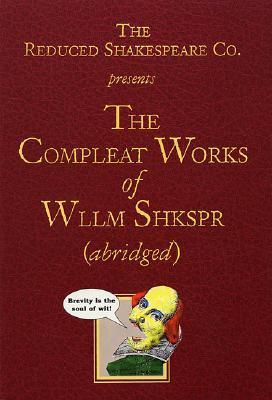
Introduction
The Compleat Works of Wllm Shkspr (Abridged) is a comedic play created by the Reduced Shakespeare Company, which parodies and condenses the works of William Shakespeare into a fast-paced performance. This humorous take on the Bard’s extensive catalog allows audiences to experience the essence of his plays in a fraction of the time. The play cleverly combines elements of slapstick, wordplay, and audience interaction to engage viewers while providing a lighthearted critique of Shakespeare’s themes and characters. This summary will explore the main characters, plot development, setting, themes, narrative style, point of view, and personal reflections on the impact and relevance of this work.
Main Characters
The Three Actors: Protagonists
The play features three main actors who embody various characters from Shakespeare’s works. Their roles are fluid as they switch between different personas, showcasing their versatility and comedic timing. Each actor brings a unique flair to the performance, contributing to the overall humor and chaos.
- Actor One: Often takes on roles from tragedies such as Hamlet and Othello. This actor embodies the seriousness of Shakespeare’s themes while injecting humor into dramatic moments.
- Actor Two: Primarily focuses on comedic roles from plays like A Midsummer Night’s Dream and Twelfth Night. This actor highlights the absurdity of love and relationships in Shakespeare’s comedies.
- Actor Three: Balances both tragic and comedic roles while also engaging with the audience. This actor often serves as the ringleader for the chaos that ensues on stage.
The Audience: Implicit Characters
While not traditional characters, the audience plays a crucial role in shaping the performance. Their reactions influence how the actors deliver lines and engage in improvisation. The interactive nature of the play creates a unique experience where audience participation becomes part of the narrative.
Plot
Main Conflict
The central conflict revolves around condensing Shakespeare’s vast body of work into a single performance. The actors face challenges as they attempt to cover all his plays while maintaining coherence and humor. The absurdity of their task becomes a source of comedy as they navigate through iconic scenes and characters.
Development
The plot unfolds through a series of sketches that parody major works by Shakespeare:
- Tragedies: The actors present Hamlet, Macbeth, and Othello in abbreviated forms, often using modern references and humor to reinterpret serious themes.
- Comedies: They combine elements from multiple comedies into one chaotic scene, showcasing misunderstandings and mistaken identities.
- Histories: The histories are presented as a football game, complete with commentary that highlights the absurdity of historical events.
As they progress through each genre, the actors encounter obstacles that require quick thinking and improvisation. Their interactions with each other and the audience create an unpredictable atmosphere that keeps viewers engaged.
Resolution
The climax occurs during their rendition of Hamlet, where they invite audience members to participate in a workshop-style performance. This interactive segment allows viewers to become part of the action, leading to hilarious outcomes. Ultimately, the play concludes with a rapid-fire recap of all Shakespeare’s works, leaving audiences entertained and enlightened about his contributions to literature.
Setting
Time and Place
The setting is primarily a theater stage where the actors perform their condensed versions of Shakespeare’s works. The minimalist set allows for quick transitions between scenes, emphasizing the comedic nature of their performances.
Influence on Characters
The theatrical setting influences how characters are portrayed. The actors’ exaggerated physical comedy complements Shakespeare’s language, allowing for humor to emerge from both dialogue and action. The simplicity of the stage design encourages creativity as they use props and costumes to bring various characters to life.
Summary of “Self-Editing for Fiction Writers” by Renni Browne and Dave King
Themes
The Absurdity of Human Nature
One prominent theme in The Compleat Works is the absurdity inherent in human behavior. Through exaggerated portrayals of Shakespeare’s characters, the play highlights how love, ambition, jealousy, and folly can lead to humorous situations. This theme resonates with audiences as it reflects real-life experiences where emotions often drive irrational actions.
Parody and Satire
The play serves as both a parody and satire of Shakespeare’s works. By condensing complex narratives into comedic sketches, it pokes fun at literary conventions while celebrating Shakespeare’s genius. This duality allows audiences to appreciate his contributions while recognizing the quirks present in his storytelling.
Audience Engagement
Another significant theme is audience engagement. By involving viewers in performances—especially during segments like Hamlet’s workshop—the play emphasizes theater’s interactive nature. This theme reinforces how live performances can create memorable experiences that extend beyond scripted lines.
Author’s Narrative Style
The narrative style employed by the Reduced Shakespeare Company is characterized by rapid-fire dialogue, clever wordplay, and physical comedy. Their writing combines highbrow literary references with lowbrow humor, creating an accessible yet intellectually stimulating experience for audiences.
The use of footnotes throughout adds an additional layer of humor as they provide commentary on Shakespeare’s works while simultaneously mocking academic pretensions associated with literary analysis.
Author’s Point of View
The play is presented from a third-person perspective through the lens of its three main actors. This perspective allows them to break down barriers between performers and audience members while providing insight into their thoughts during performances. Their interactions create an engaging dynamic that enhances overall enjoyment.
Personal Reflection
Reading or watching The Compleat Works evokes laughter while offering valuable insights into Shakespeare’s timeless themes—especially regarding human nature or societal norms that continue to resonate today. The play encourages critical thinking about literature; it reminds us that even classic works can be approached with humor without losing their essence.
Furthermore, this work remains significant amid ongoing discussions around accessibility in literature or theater—highlighting how creative reinterpretations can make classic texts more relatable for modern audiences seeking entertainment alongside education.
Conclusion
The Compleat Works of Wllm Shkspr (Abridged) stands out not just as an entertaining theatrical experience but also as an insightful exploration into human behavior through whimsical character portrayals navigating moral dilemmas within comedic settings created by reduced Shakespearean genius.
Through its clever parodies—from tragic tales like Hamlet toward chaotic comedies—the play teaches invaluable lessons about embracing absurdity while critiquing societal vices that persist today.
As we reflect upon this delightful production amidst our own journeys toward understanding ourselves—it serves both as inspiration for finding joy within classic literature—and reminder that laughter can bridge gaps across time!


